¶ 6.2 The European Flood Awareness System (EFAS)
The European Flood Awareness System (EFAS) is the flood service of CEMS and is an operational system for monitoring and forecasting floods across the pan-European domain (left graphic below). GFM output layers are available through the EFAS Map Viewer. To access the Map Viewer and to visualise the products in real-time, users are requested to become EFAS partners. (See the terms and conditions of the association agreement). Once registered, the Map Viewer can be accessed by entering account details (right graphic below).
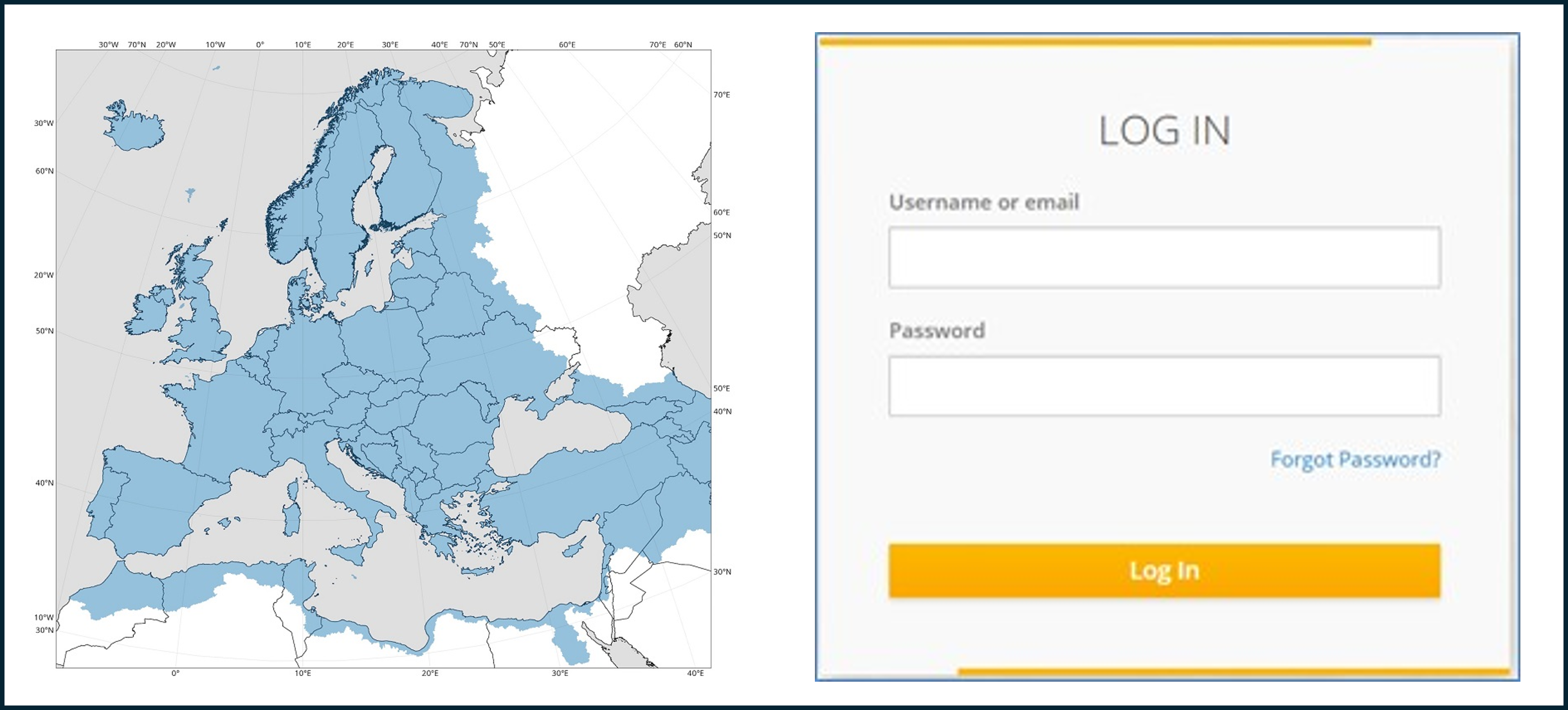
¶ 6.2.1 GFM Health Status
Also within EFAS Map Viewer, information about the overall health state of the GFM service is presented. An “alert sign” in the top menu, positioned on the right, next to the user profile indicates the health state of the service (left graphic below). Detailed information about the health state of the various components of the service can be retrieved by clicking on the “alert sign”.
This will open a pop-up window onto the map viewer (right graphic below) presenting the latest registered alert notifications. The different alert notifications are organised by Group providing details about the current Status, a Message describing the alert notification and a Date indicating when the alert was raised. The column Group refers to the individual components of the service. The four groups are explained in Section 6.1.1.

¶ 6.2.2 How to browse GFM products in EFAS Map Viewer
Once logged in, GFM output layers are listed in the top bar under the “GFM” menu (left graphic below, red rectangle). Each layer is visualized by toggling to the “on” position. The layer is then added to the dynamic layer list on the right on the screen (right graphic below).
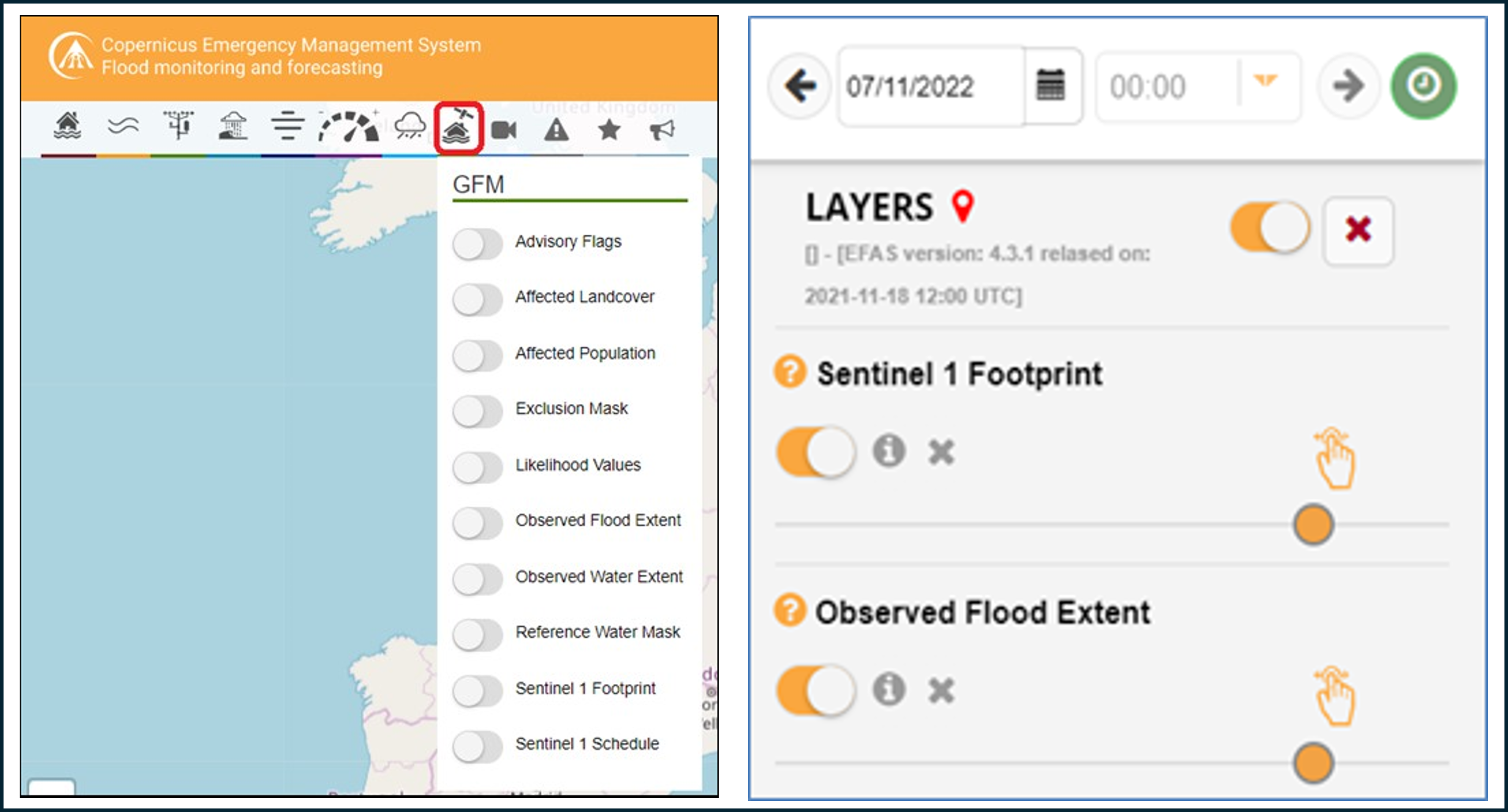
When the Observed Flood Extent output layer is switched on, the EFAS Map Viewer displays the S-1 tiles (left graphic below) for which GFM detected flooded areas, with the amount of flooding indicated by colour-coding (right graphic below).
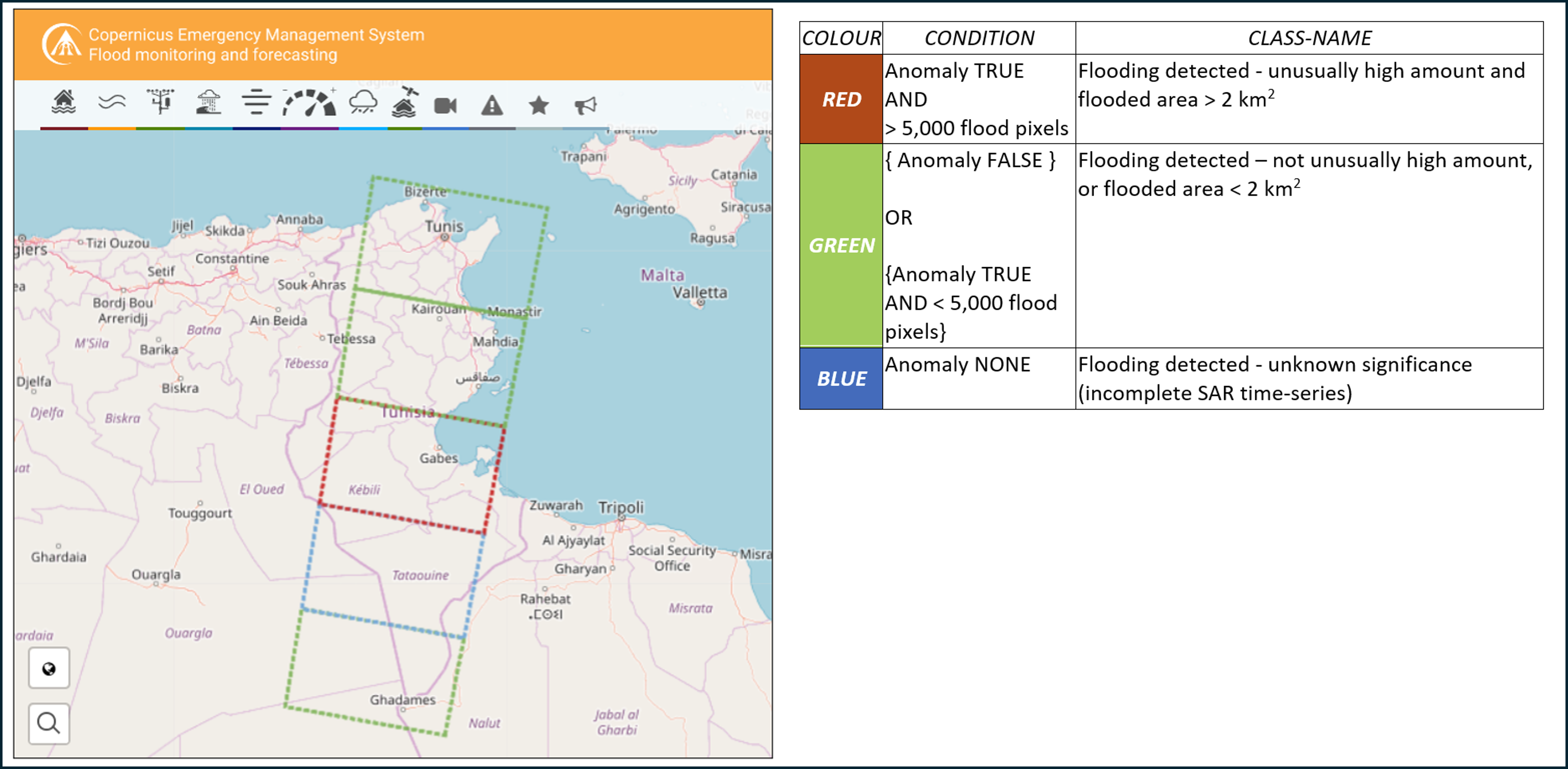
¶ 6.2.3 Areas of interest
On clicking on the “GFM” icon, as shown below, GFM-registered users can draw their own areas of interest (AOIs).

- The system then displays a menu (left graphic below) offering the user the possibility of selecting (a) the list of drawn AOIs, and (b) the list of the notification for the AOIs as set in the GFM WebApp.
- The “Area of Interest” menu (centre graphic below) allows users to visualize the list of user-defined AOIs. To the right of each AOI's name, users can: display the AOI boundaries (eye-shaped icon); hide the AOI boundaries (barred eye-shaped icon); modify the AOI boundaries (“pencil & sheet” icon, which redirects to the GFM web portal).
- Above the list of the available AOIs (centre graphic below), users are offered the chance to design the AOIs of their choice directly through GloFAS:
| Square icon: Design an AOI. | Eraser icon: Delete the AOI. | Floppy disc icon: Save the AOI. |
- When “Save the AOI” is selected, a form is displayed for users to fill out, to save the AOI and display the available GFM products output layers (right graphic below).
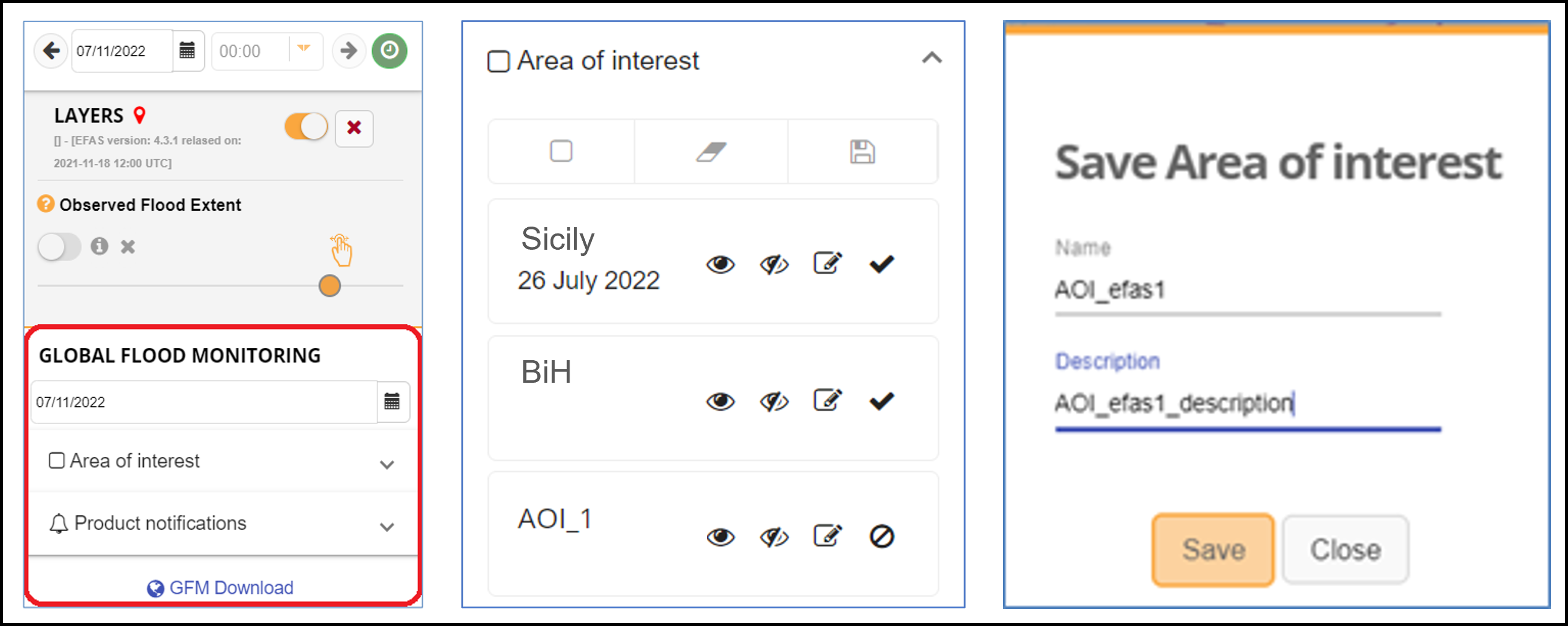
Please note that the maximum number of AOIs for each user is limited to 25. Once the limit is reached, a new AOI can be added only if one of the previous is deleted.
¶ 6.2.4 Floods notifications
Users have the option to be notified any time a new GFM output layer is available for a specific AOI, on proper configuration of the notification setup through the Web Portal, as follows:
- Flood notifications are displayed on EFAS as well through a menu (left graphic below).
- When users click on a notification, the system will display all newly available GFM output layers. These can then be downloaded in a bundle by pressing the leftward arrow icon (left graphic below, red rectangle).
- The system will then open a pop-up window allowing the users to download the aggregate .zip file (containing all the output layer, in TIFF format), by pressing the downward arrow (right graphic below, red rectangle).
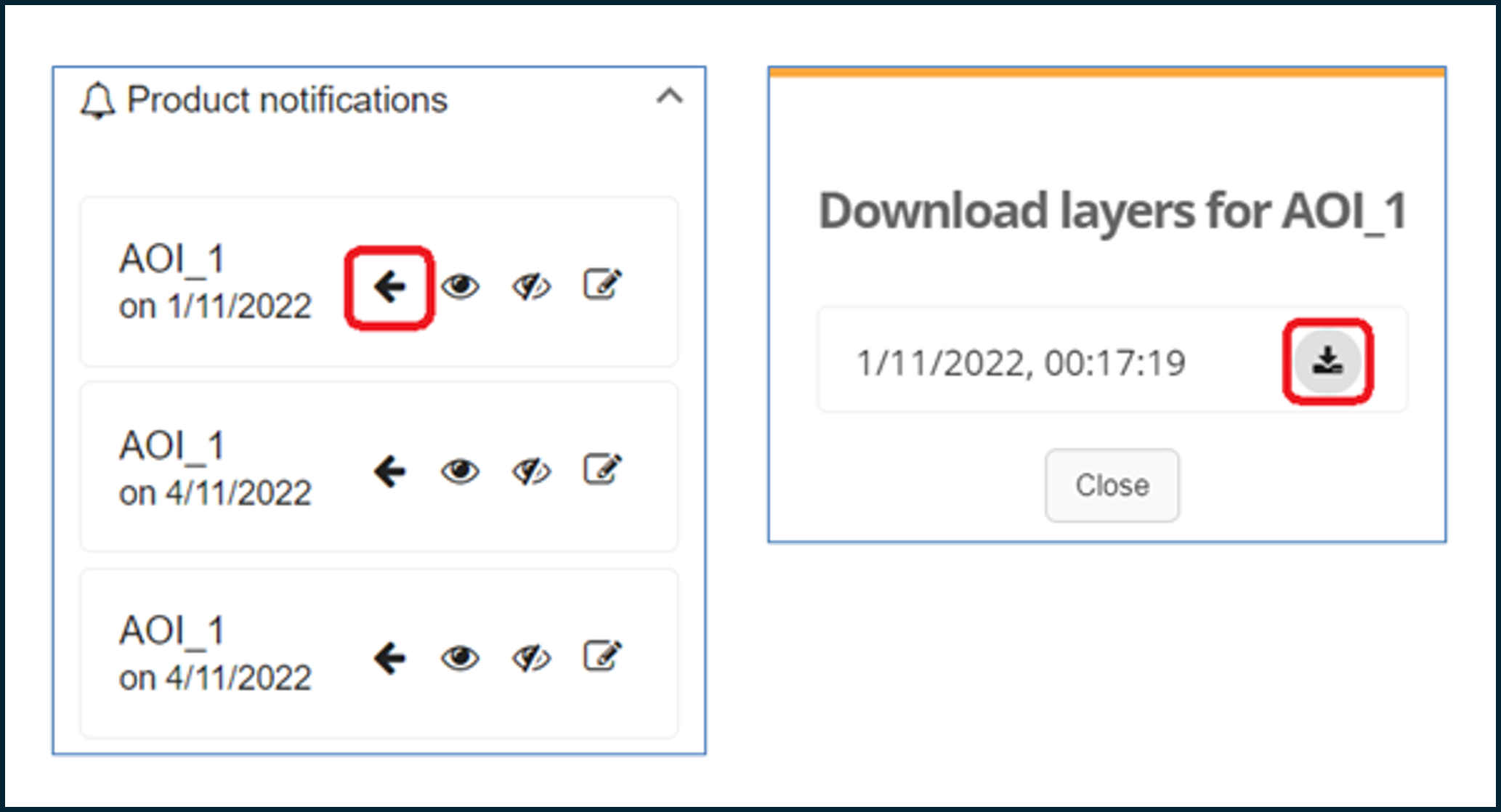
Didn't find what you were looking for? Send us a message through the contact forms:
EFAS: https://european-flood.emergency.copernicus.eu/en/form/feedback [Flood Monitoring]
GloFAS: https://global-flood.emergency.copernicus.eu/contact-us/ [Satellite-based Global Flood Monitoring]